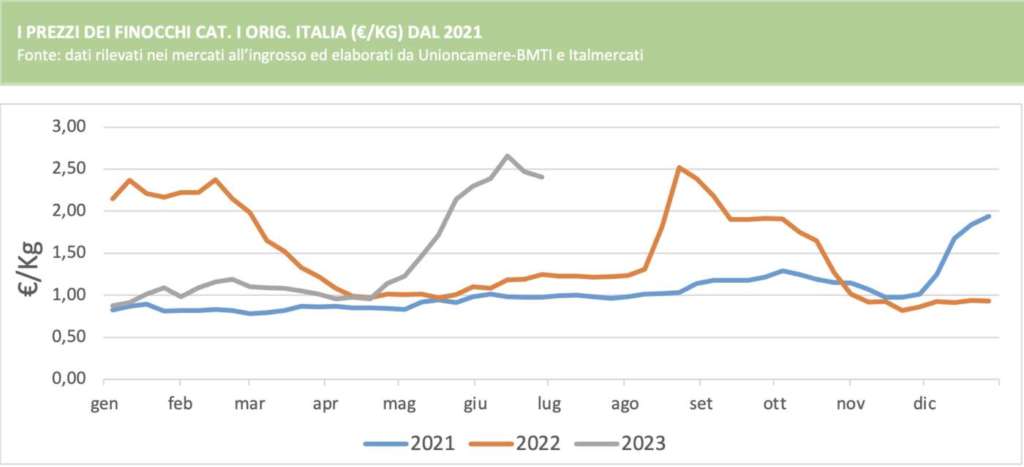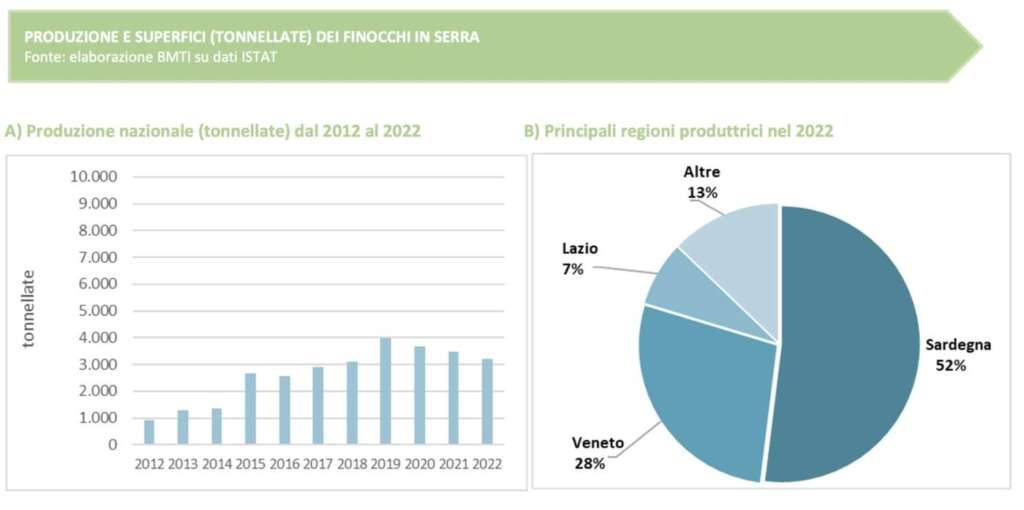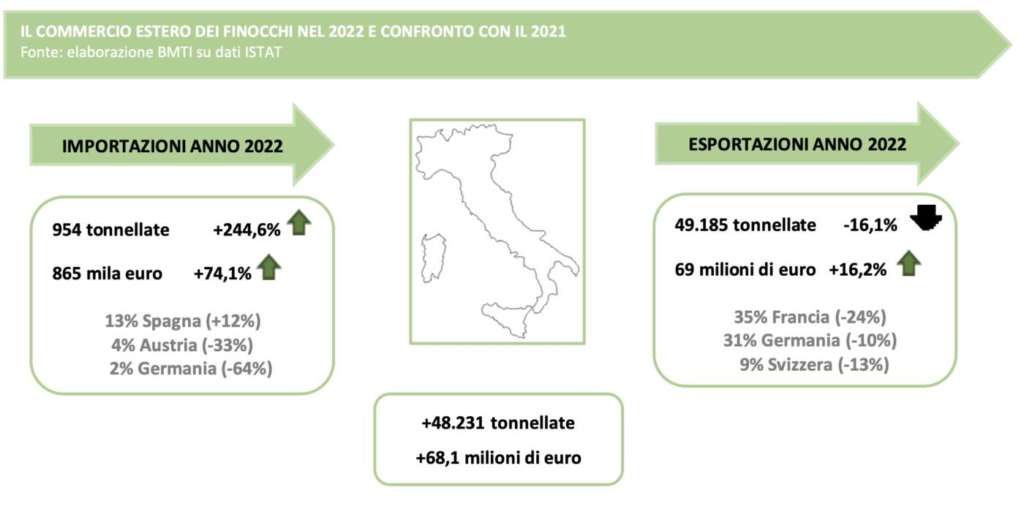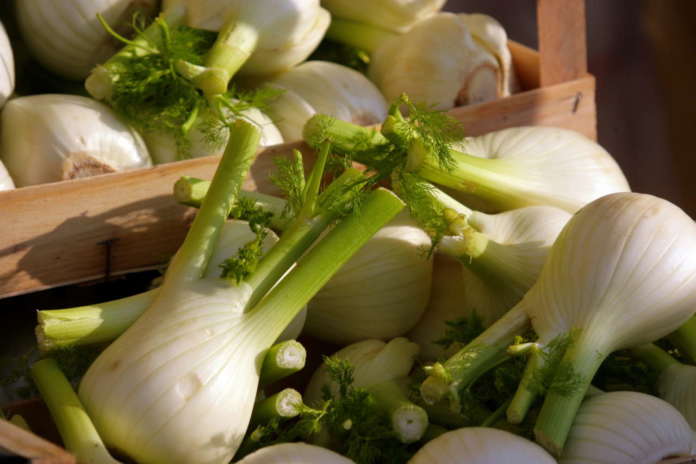Lò
La campagna 2023 dei finocchi italiani è stata caratterizzata da diversi problemi, che hanno avuto inizio già nell’autunno 2022, dove le frequenti piogge e l’umidità hanno impedito il corretto sviluppo della pianta anche se a inizio campagna si sono osservate quotazioni più basse.
 Con l’arrivo della primavera, invece, i prezzi hanno subìto una vera e propria impennata a causa delle piogge che hanno caratterizzato il mese di maggio e generato gravi problemi di raccolta e di disponibilità di prodotto, oltre che danneggiare gli impianti. Al momento stanno attraversando la stessa problematica anche i finocchi di origine tedesca, che hanno da poco raggiunto i mercati nazionali insieme alle varietà tardive italiane.
Con l’arrivo della primavera, invece, i prezzi hanno subìto una vera e propria impennata a causa delle piogge che hanno caratterizzato il mese di maggio e generato gravi problemi di raccolta e di disponibilità di prodotto, oltre che danneggiare gli impianti. Al momento stanno attraversando la stessa problematica anche i finocchi di origine tedesca, che hanno da poco raggiunto i mercati nazionali insieme alle varietà tardive italiane.
 La maggior parte dei finocchi, coltura che ben si adatta alle condizioni climatiche di tutto il territorio nazionale, viene prodotta in pieno campo: le maggiori produzioni avvengono in Puglia e Campania, dove troviamo la maggior estensione degli impianti. Il 2022 ha subito una battuta d’arresto per quanto riguarda le produzioni in pieno campo, come si prevede potrebbe essere anche per l’annata 2023.
La maggior parte dei finocchi, coltura che ben si adatta alle condizioni climatiche di tutto il territorio nazionale, viene prodotta in pieno campo: le maggiori produzioni avvengono in Puglia e Campania, dove troviamo la maggior estensione degli impianti. Il 2022 ha subito una battuta d’arresto per quanto riguarda le produzioni in pieno campo, come si prevede potrebbe essere anche per l’annata 2023.
 Le esigue produzioni di serra trovano Sardegna e Veneto fra i maggiori produttori, con un aumento delle produzioni fino al 2019, che ha poi visto un calo negli ultimi due anni, caratterizzati da importanti aumenti dei costi di produzione e di gestione degli impianti protetti.
Le esigue produzioni di serra trovano Sardegna e Veneto fra i maggiori produttori, con un aumento delle produzioni fino al 2019, che ha poi visto un calo negli ultimi due anni, caratterizzati da importanti aumenti dei costi di produzione e di gestione degli impianti protetti.
 Durante il 2022, a causa della scarsità delle produzioni nazionali, si sono verificati importanti aumenti complessivi delle quantità importate di finocchi, soprattutto dalla Spagna. Per quanto riguarda le esportazioni si è assistito a un calo delle quantità, anche se con a maggiori ricavi, a causa degli aumentati prezzi questo ortaggio. •
Durante il 2022, a causa della scarsità delle produzioni nazionali, si sono verificati importanti aumenti complessivi delle quantità importate di finocchi, soprattutto dalla Spagna. Per quanto riguarda le esportazioni si è assistito a un calo delle quantità, anche se con a maggiori ricavi, a causa degli aumentati prezzi questo ortaggio. •
—-
Fennel, Italian production beyond the problems
Substantial price surge in spring, due to bad weather. Puglia and Campania are the regions with the greatest extension of the plants
The 2023 national fennel campaign was characterized by various problems, which already began in autumn 2022; in fact, the frequent rains and humidity prevented the correct development of the plant, generating problems in terms of both quality and non-conformity, especially in the southern regions. At the beginning of the campaign, in the months from January to April, lower prices were observed compared to 2022, however due to the large quantities collected despite the problems mentioned above. With the arrival of spring, however, prices have undergone a real surge due to the rains that characterized the month of May and generated serious problems with harvesting and product availability, as well as damaging the plants in the areas affected by flood.
At the moment, fennel of German origin, which has recently reached the national markets together with the late Italian varieties, is also going through the same problem.
Most of the fennel, a crop that adapts well to the climatic conditions of the entire national territory and doesn’t particularly suffer from the cold and moderate bad weather conditions, is produced in the open field: the major productions are made in Puglia and Campania, where we find the greater extension of the plants. 2022, due to both production costs and violent bad weather phenomena, suffered a setback as regards open field productions, as we might expect also for the 2023 vintage.
The small greenhouse productions find Sardinia and Veneto among the major producers, with an increase in production up to 2019, which then saw a decline in the last two years, characterized by significant increases in production and management costs of protected plants.
During 2022, due to the scarcity of national productions, there were significant overall increases in the quantities of imported fennel, especially from Spain. As for exports, there has been a drop in quantities, but higher revenues, because of the increased prices of this vegetable.










